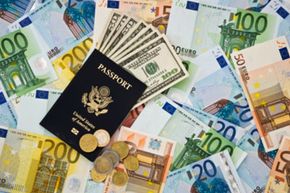During World War II, Sen. William J. Fulbright, who would go on to distinguish himself in the area of international affairs, sponsored a bill that he hoped would eventually strengthen foreign relations. He wanted to give Americans and citizens of other countries an avenue for exchanging ideas, participating in cooperative education and building a mutual understanding among one another [source: IIE]. His piece of legislation, the Fulbright Act, was written in 1946, when the United States was exporting goods and supplies in support of the war effort. Fulbright's plan was for revenue from this surplus war property to fund new educational programs where participants from around the world could conduct research, exchange ideas and work together to solve problems on a global scale.
Today, the Fulbright Program is considered the largest and most prestigious educational exchange program, providing recent college graduates, graduate students and young professionals the opportunity to continue their education or professional development through research and study in a foreign country [source: IIE]. As of 2009, there have been more than 294,000 Fulbright scholars since the program was introduced; approximately 111,000 of which were from the United States [source: U.S. Department of State: About]. Each year, around 7,500 grants are awarded to students in more than 100 countries to conduct research on topics ranging from microfinance to the influence of pop culture in emerging economies [source: U.S. Department of State: Alumni].
Advertisement
The Fulbright Program is extremely competitive, and scholarships are awarded in nearly every field, from science to the performing arts. The program is open to anyone interested in applying, but recipients are chosen based on merit, professional and academic achievement, and the ability to represent their countries and cultures.
There are two primary Fulbright Scholarship programs: the Fulbright U.S Student Program, which grants awards for U.S. citizens to study abroad, and the Fulbright Foreign Student Program, which awards scholarships for students from other countries to study in the United States. Both scholarships are awarded for one academic year, but in some cases, may be renewed upon completion of the first term.
In the next section, we'll look at who is in charge of the Fulbright Program and how it's funded.
Advertisement


